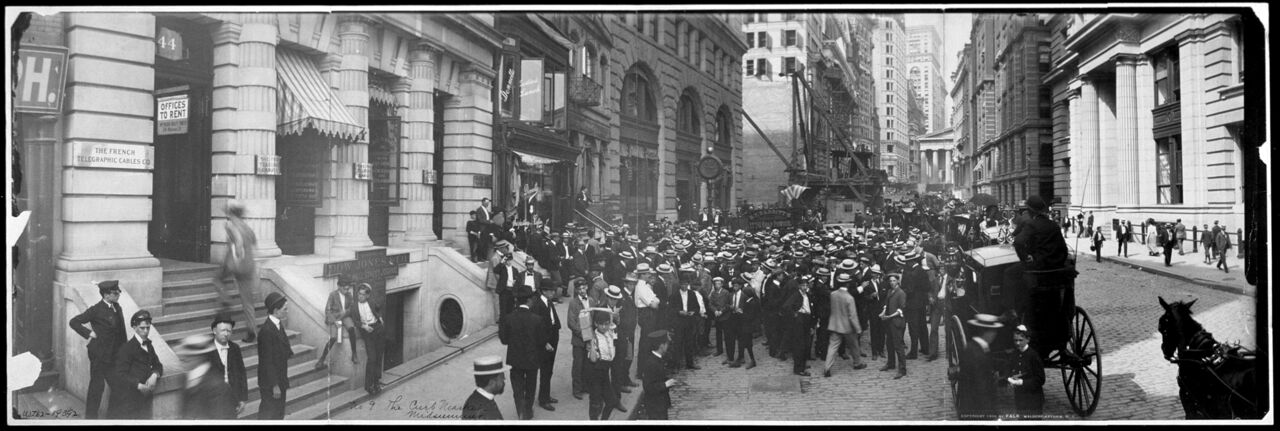Everyday Hedging
Distributing risks and seizing opportunities in a variable world.
Part of the author’s reflections on These Uncertain Times
In facing down uncertainty, readers may be advised “to hedge one’s bets”. But what does this mean, and how does it manifest beyond the world of high finance, Where it denotes strategies to limit exposure to risk in financial assets, through, for example, diversification, or targeted investments in derivatives to offset future losses. amid the rhythms and routines of daily life? What would it mean to speak of everyday hedging? As one reference point, we could consider “dutching” or Dutch betting: the attempt to realise “modest gains”, no matter the outcome — “smoothing away both extreme losses and high gains.” Zeitlyn, “Haunting, Dutching, and Interference: Provocations for the Anthropology of Time”
The principle behind dutching suggests that, when planning for the future, we should try every option (in inverse proportion to possibly shifting judgments of likelihood) and see what works.David Zeityln, “Haunting, Dutching, and Interference: Provocations for the Anthropology of Time”
The “diversified investment portfolio” offers another way to deal with future uncertainty in the present. By spreading ones bets, one can better withstand the exigencies of a “seething present containing a superposition of pasts and futures: an interfering mess out of which decisions must be made and actions taken.” Zeityln, “Haunting, Dutching, and Interference: Provocations for the Anthropology of Time” As anthropologist Jennifer Johnson-Hanks describes, talk of diversified portfolios parallels a “common image used by many … in Cameroon to talk about why one should have multiple boyfriends (in case of a problem with one, it is good to have ‘various businesses’).” Johnson-Hanks, “Vital conjunctures revisited [keynote]”

As one example of hedging against the negative outcomes of environmental variability, consider the use of bird call omens among the Kantu’ Dayak, in Indonesian Borneo.
Dove, “Uncertainty, humility, and adaptation in the tropical forest: The agricultural augury of the Kantu’”; Bitter Shade For those cultivating rice swiddens in this rainforest setting, the relationship between individual actors and their universe is structured by “a loose framework of a fairly elaborate applied ornithology.” Harrisson, “Birds and men in Borneo” Derived from the occurrence and interactions between seven species’ bird calls (out of 630+) Including “the white-rumped shama, the rufous piculet, the scarlet-rumped trogon, Diard’s trogon, the banded kingfisher, the maroon woodpecker, and the crested jay.” Dove, Bitter Shade, guiding planting decisions in an environment where rainfall, flooding, and pest outbreaks vary greatly from year to year, the bird call augury system functions like a random number table, interrupting patterned human behaviour. Dove, “Uncertainty, humility, and adaptation in the tropical forest”
This use of bird call omens is a culturally-embedded form of everyday hedging, supporting diversity in swidden site selection, within and between households. Even if many households end up under-producing, the gains of those who do well allows the community, as a whole, to mitigate any losses by pooling their surplus. Here, a practical belief system addresses the human tendency for deterministic thinking and “reliance on precedent” in the tropical rainforest, an environment whose complexity and uncertainty exceeds (human) comprehension, and where past conditions are a poor guide to future conditions. Dove, “Uncertainty, humility, and adaptation in the tropical forest”; Bitter Shade
Léonie Newhouse defines everyday hedging as “the work of attuning oneself to ... radical uncertainty and being ready to jump at the arrival of the unforeseen.” Newhouse, “Uncertain futures and everyday hedging in a humanitarian city”; see also, FoAM’s notes on non-predictive strategy. Everyday hedging practices equip people to handle futures, loss, and the unexpected – including imaginative opportunism; spreading risks and exposures across diverse, spatially or sectorally distributed activities, through side-hustles and similar; cultivating allies, informants, and future collaborators by investing in social ties; and continually recalibrating one’s actions, in light of changed circumstances and new information. Newhouse, “Uncertain futures and everyday hedging in a humanitarian city”


Why is it that we can see something coming and still not prepare? We realized that we needed a different tool to deal with this complexity, and so we created a game.
Andrew Lovett-Barron, Covid Anxiety: A Foresight Game
This could entail literally spreading risk across space, something particularly tangible, “thick” and present for migrants and nomadic herders, who are accustomed to “moving and responding to changing environmental and market conditions” Scoones, “What is uncertainty and why does it matter?” — and could have, or might yet, end up somewhere else entirely. This might also involve keeping an eye on other, distant places, furnishing the “imaginative horizons” for future exit routes and forward strategies. Newhouse, “Uncertain futures and everyday hedging in a humanitarian city”
It could require gathering information, practising discernment, picking salient details from background noise, as a way to generate expectations about the shape of things yet to come. Newhouse, “Uncertain futures and everyday hedging in a humanitarian city” With pressure to stay ahead of the game, everyday hedgers are required to act on their hunches and suspicions before they can harden into knowledge. Trovalla and Trovalla, “Infrastructure as a divination tool: Whispers from the grids in a Nigerian city” In times of information overload and heightened uncertainty, this might involve learning to “read” obscured truths from the signals, symptoms, and traces in one’s environment – including graffiti, system outages, stickers, posters, rumour, and gossip — all while weighing sources, assessing reliability, and triangulating between different accounts of the situation at hand.
This might involve networking, making and remaking “chains of relations”; gathering allies and resources, or shifting one’s focus to find spaces and places, suitable niches, for the construction of “hoped-for futures” Newhouse, “Uncertain futures and everyday hedging in a humanitarian city”. The intent, throughout, is to create one’s own luck by maximising one’s surface area, pursuing a greater exposure to chance, contingency, and fleeting, time-limited windows or alignments of opportunity; crafting experiments and making moves to invest in particular versions of the future, in the hope of their realisation. Trovalla and Trovalla, “Infrastructure as a divination tool”

Léonie Newhouse writes of Juba, South Sudan; the Trovallas of Kano, in northern Nigeria. But what might everyday hedging practices look like in other contexts (including your own) orfor less obviously vulnerable, precarious, and mobile people? What opportunities are there to spread risk for those stuck or rooted in place? How can journalists, academics, writers, or arts sector workers practice discernment, attuning to their environments in ways that stray beyond the standard news feeds and trade publication subscriptions? And how can those re-entering the workplace, after a period of illness or having started a family, maximise their exposure to the world, without putting all their eggs in one basket?
Prehearsals and Pre-enactments
🝓
Further reading & references